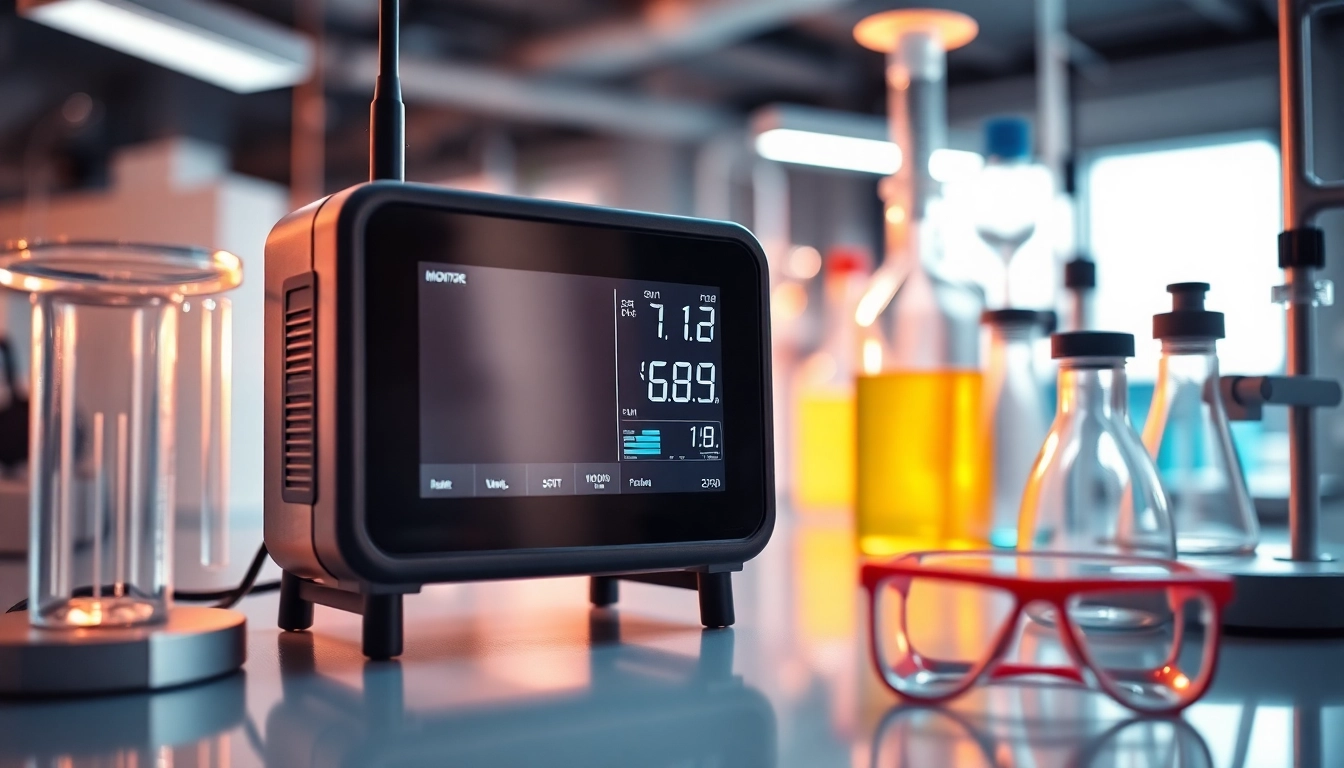Understanding Hydrogen Peroxide and Its Applications
What Is Hydrogen Peroxide?
Hydrogen peroxide (H2O2) is a chemical compound that consists of two hydrogen atoms and two oxygen atoms. It is a pale blue liquid in its pure form but appears colorless in dilute solutions. Known for its strong oxidizing properties, hydrogen peroxide is used as a bleaching agent, disinfectant, and antiseptic. It is non-toxic at low concentrations and environmentally benign, which makes it an attractive alternative to chlorine-based products in various applications—from household cleaning to industrial processes.
Common Uses of Hydrogen Peroxide
Hydrogen peroxide finds utility in numerous fields due to its versatility. Common uses include:
- Disinfection: Often employed in hospitals and laboratories, hydrogen peroxide is effective against a broad spectrum of pathogens. It works by releasing free radicals that can damage the proteins and DNA of microorganisms.
- Cleaning Agent: As a household cleaner, it is capable of removing stains and sanitizing surfaces.
- Manufacturing: In the industrial sector, it serves as a bleaching agent for textiles and paper, as well as a component in the production of certain chemicals.
- Food Processing: Used as a sanitizer to cleanse food contact surfaces and equipment, ensuring food safety.
- Oxidizing Agent: In various chemical reactions, hydrogen peroxide is used to facilitate the oxidation process, making it valuable in laboratory and industrial settings.
Why Monitoring Levels Is Crucial
Monitoring hydrogen peroxide levels is essential across various applications, especially those involving disinfection and industrial processes. Too high of a concentration can lead to harmful effects, such as tissue damage in medical settings or equipment corrosion in manufacturing. Conversely, insufficient levels may result in ineffective disinfection. Therefore, employing a Hydrogen Peroxide monitor is crucial for maintaining safe and effective concentrations.
Hydrogen Peroxide Monitor Technologies Explained
Different Types of Hydrogen Peroxide Monitors
Hydrogen peroxide monitors can be categorized into various types based on technology, application, and specificity:
- Electrochemical Sensors: These devices operate by measuring electrical changes in solution resulting from the reaction between hydrogen peroxide and the sensor’s surface. Known for their accuracy in specific environments.
- Colorimetric Detectors: These monitors utilize chemical reactions that produce a color change proportional to the hydrogen peroxide concentration. While simple and affordable, these devices can be less precise.
- Optical Sensors: Using light absorption or scattering principles, optical sensors can detect hydrogen peroxide concentrations non-invasively. These sensors often provide the advantage of being more durable in harsh environments.
- Gas Detection Systems: Some advanced monitors detect hydrogen peroxide vapors in the air, essential for environments where aerosolized disinfectant is present, ensuring user safety and compliance with occupational health standards.
How Monitors Work: The Science Behind It
The operation of hydrogen peroxide monitors hinges on their sensing mechanisms. For example, electrochemical sensors typically contain a working electrode coated with a catalyst. When hydrogen peroxide comes into contact with the electrode, it undergoes oxidation, producing a measurable current that correlates with concentration. This principle of operation allows for real-time monitoring, providing immediate feedback on hydrogen peroxide levels in the environment.
Accuracy and Reliability of Monitoring Devices
Accuracy and reliability are paramount when it comes to selecting a hydrogen peroxide monitor. Factors influencing these attributes include:
- Calibration: Regular calibration against known standards is essential to maintain accuracy over time.
- Environmental Influences: Temperature, humidity, and the presence of other gases can affect monitor performance. Understanding these parameters can enhance data quality.
- Sensor Lifespan: The longevity of the sensor and the manufacturer’s recommended replacement intervals play a critical role in ensuring reliable measurements.
Choosing the Right Hydrogen Peroxide Monitor
Key Features to Look For
When selecting a hydrogen peroxide monitor, it is crucial to consider several key features to ensure it meets your specific needs:
- Detection Range: Ensure the monitor can detect the concentration levels relevant to your application, from very low levels for sensitive environments to higher concentrations for industrial use.
- Response Time: A quick response time is vital for applications where immediate action is required upon detecting unsafe levels of hydrogen peroxide.
- Portability: For field applications, a portable monitor can facilitate easy use and flexibility in varied environments.
- Data Logging Capabilities: Monitors equipped with data logging features allow users to track measurements over time, providing valuable insights for compliance and safety assessments.
- Alarm Systems: Built-in alarms that trigger at predetermined concentration thresholds can enhance safety by providing immediate alerts to unsafe conditions.
Comparing Monitors: Price vs. Performance
While price is often a significant consideration in purchasing a hydrogen peroxide monitor, it is essential to weigh it against performance features:
Inexpensive monitors may lack essential features that higher-priced models offer, such as advanced sensor technologies, better accuracy, and longer warranties. On the other hand, high-end monitors may include features that provide added value, such as integration capabilities with other safety systems, enhanced data analysis functions, or superior build quality for industrial applications. Careful consideration of cost versus value can lead to more informed purchasing decisions.
Vendor Reputation and Support
The reputation of the vendor is also a deciding factor in selecting a hydrogen peroxide monitor. Researching user feedback, warranty policies, and support services can provide insights into a vendor’s reliability. An established vendor with good customer support can be invaluable, especially if issues arise after purchase. Seek vendors who offer extensive product documentation, robust customer service, and training resources to ensure that you can effectively utilize the monitoring technology.
Best Practices for Monitoring Hydrogen Peroxide Levels
Installation and Setup Guidelines
Installing and setting up hydrogen peroxide monitors correctly is crucial to ensure accurate readings. Consider these best practices:
- Positioning: Place the monitor in areas where hydrogen peroxide is likely to accumulate. It should be near applications of use but outside of direct splashes or contact with cleaning agents.
- Environmental Control: Ensure that the installation environment is within the monitor’s operational specifications, minimizing excessive heat, moisture, or exposure to other chemicals.
- Calibration Upon Installation: Perform an initial calibration using known hydrogen peroxide solutions to establish a baseline for accurate readings.
Routine Maintenance and Calibration
Routine maintenance and calibration of hydrogen peroxide monitors are vital for their longevity and performance:
- Regular Calibrations: Schedule periodic calibrations based on the manufacturer’s guidelines to confirm that the monitor remains accurate over time.
- Sensor Maintenance: Follow specific maintenance instructions provided by the manufacturer, such as cleaning the sensor components and ensuring the equipment is free from contaminants.
- Firmware Updates: If applicable, keep firmware up-to-date to ensure the monitor incorporates the latest features and performance improvements.
Interpreting Monitor Data for Safety
Understanding and interpreting the data from hydrogen peroxide monitors is critical for maintaining safety:
- Threshold Levels: Familiarize yourself with the permissible exposure limits for hydrogen peroxide in your environment. Regularly compare monitor data against these levels.
- Trends Over Time: Track data trends to identify any indicating changes that may suggest equipment malfunction or concentration increases.
- Responding to Alerts: Develop a plan of action for responding to monitoring alarms or alerts, ensuring that personnel is trained and prepared for immediate action.
Future Trends in Hydrogen Peroxide Monitoring
Innovation in Sensor Technology
The field of hydrogen peroxide monitoring is continuously evolving, particularly with advancements in sensor technology. Emerging trends include:
- Nanosensors: Utilizing nanotechnology, new sensors are being developed that offer improved sensitivity and specificity at lower costs, expanding their applicability in various environments.
- Wearable Sensors: The development of wearable technology for personal exposure assessment is projected, helping monitor individuals working in environments where hydrogen peroxide is used.
Integration with Smart Monitoring Systems
Integration with smart monitoring systems and IoT devices is on the rise, allowing for:
- Real-Time Data Analysis: The capability to analyze data in real-time and make informed decisions based on actionable insights.
- Remote Monitoring: Improved remote access to monitoring systems allows for rapid response strategies and oversight, making management efficient.
- Automated Alerts: Automated systems can send notifications directly to responsible personnel or alert control systems when thresholds are breached.
Regulatory Changes and Their Impact
As regulations concerning workplace safety and environmental impact evolve, so too will the technology surrounding hydrogen peroxide monitoring. Key factors include:
- Stricter Guidelines: Increased scrutiny from regulatory bodies may require more precise monitoring capabilities, adding pressure on manufacturers to innovate.
- Impact on Existing Practices: Companies may need to adapt their protocols and equipment to comply with new standards, leading to an overall rise in demand for reliable monitoring solutions.



